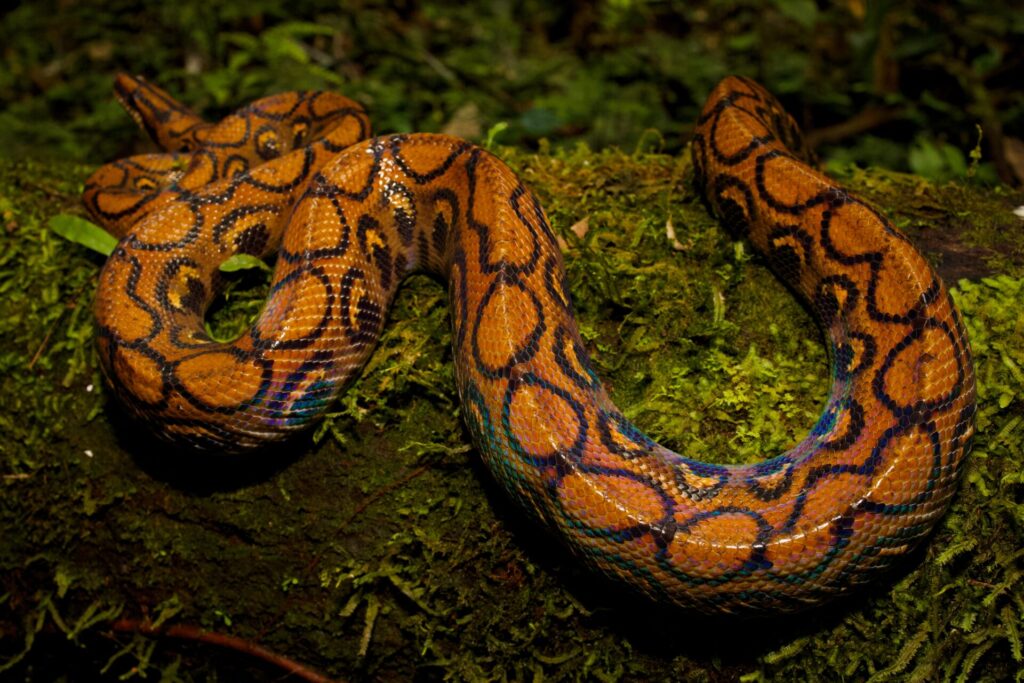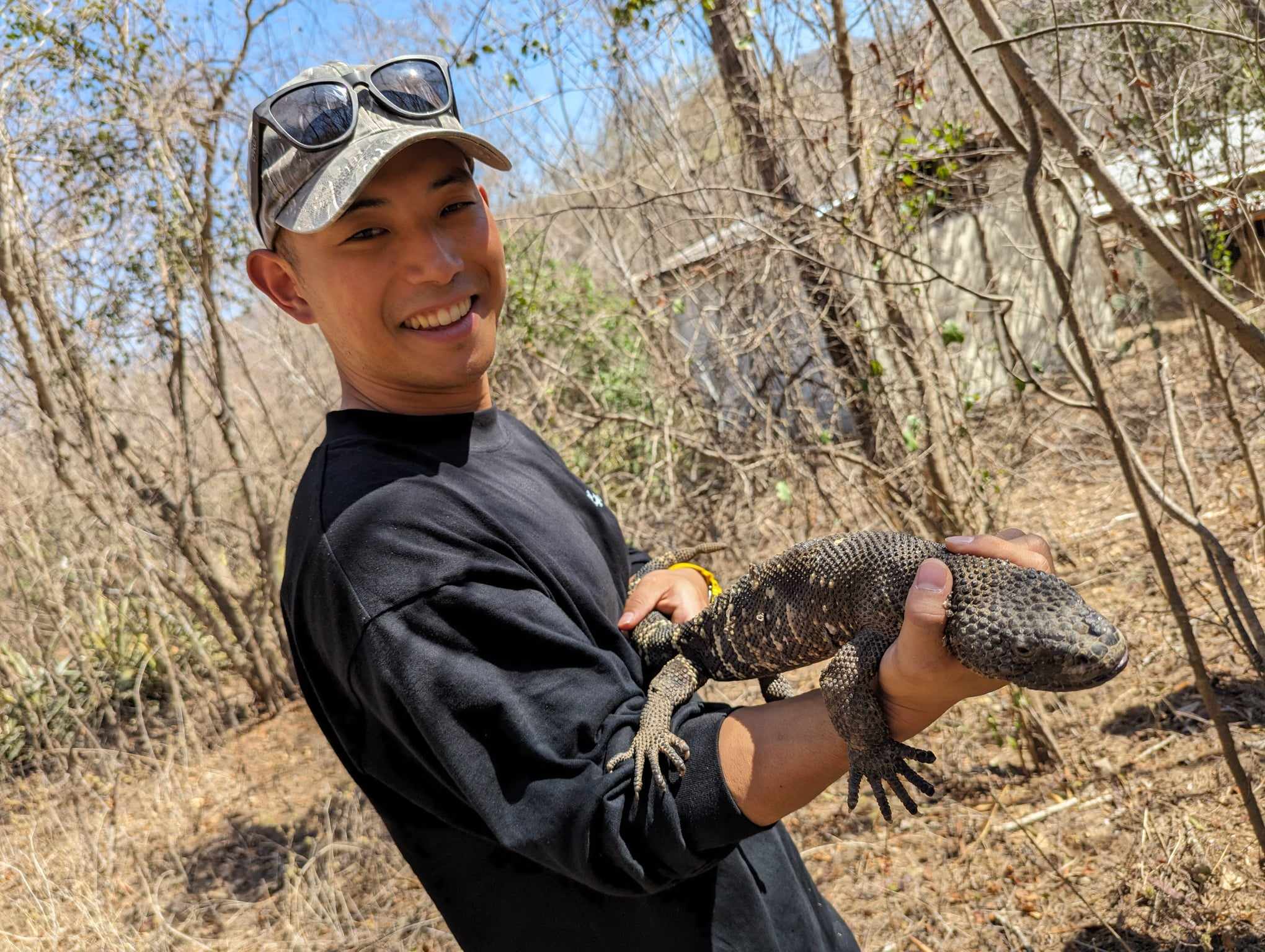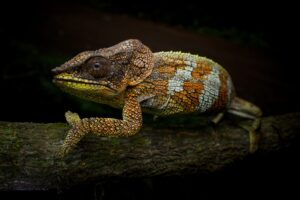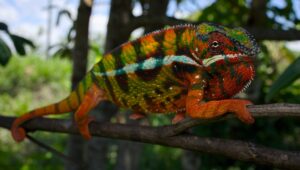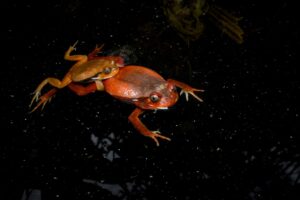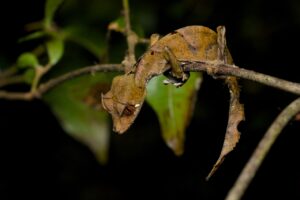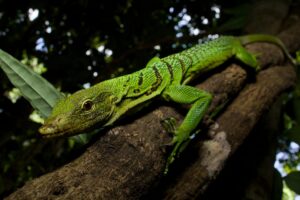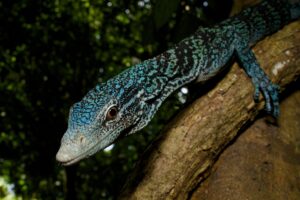– An Encounter in the Amazon Rainforest of Ecuador –
This time, I’d like to share an incredible experience: spotting the stunning Rainbow Boa (Epicrates cenchria) in the Amazon rainforest of Ecuador.
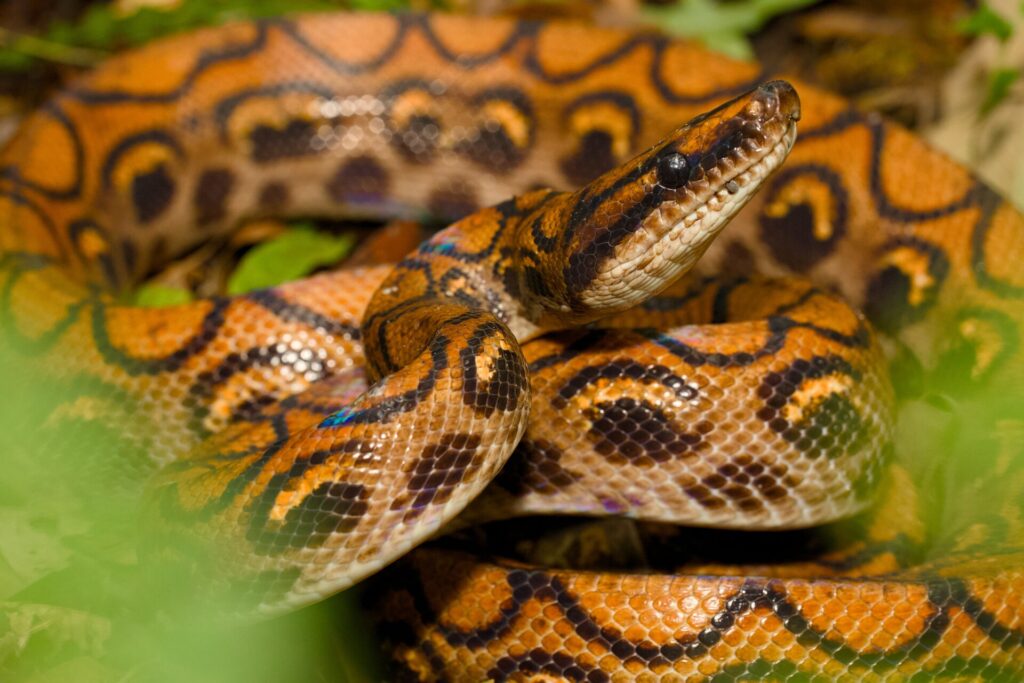
■ A Snake of Many Faces: Patterns and Subspecies
Rainbow boas have several subspecies across their range, each with unique coloration and patterns as they mature.
One commonly seen in the pet industry—the Colombian Rainbow Boa—tends to lose its vivid patterns and turn brownish as it ages.
However, the individual we encountered in Ecuador retained its bright orange markings even in adulthood, making it, in my opinion, one of the most beautiful varieties. Under the sunlight, its iridescent sheen sparkled like a living gemstone—one of nature’s finest masterpieces.
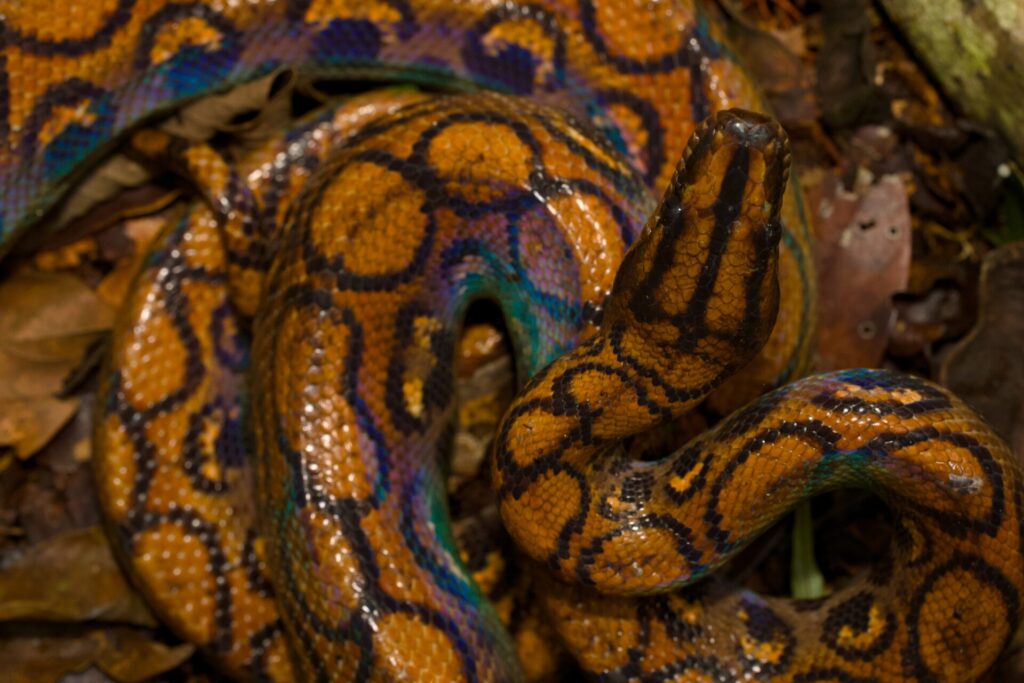
■ Closer Than You Think: Their Surprising Habitat
Rainbow boas aren’t just deep in the jungle—they’re surprisingly close to human settlements too. Occasionally, individuals are found run over on roads passing through the Amazon.
This proximity stems from their diet: rainbow boas are fond of birds and are often drawn to the smell of chickens raised near human homes.
In many parts of the Amazon, people still live off the land, and losing chickens to snakes is a serious issue. As a result, many locals kill rainbow boas on sight, viewing them as a threat to their livelihoods.
It’s heartbreaking to hear about such beautiful creatures being killed, but at the same time, it’s hard to blame people who are simply trying to survive.
■ Live Births in the Rainforest: A Fascinating Trait
One unique trait of the rainbow boa—and many other boa species—is that they give birth to live young rather than laying eggs.
In the Amazon, heavy rainfall can quickly transform dry ground into marshland. Eggs laid on the forest floor would face serious survival challenges.
By keeping the eggs inside their body until hatching, female boas can ensure their young are born in safer conditions. Local guides and I discussed how this adaptation likely evolved in response to the rainforest’s unpredictable environment.
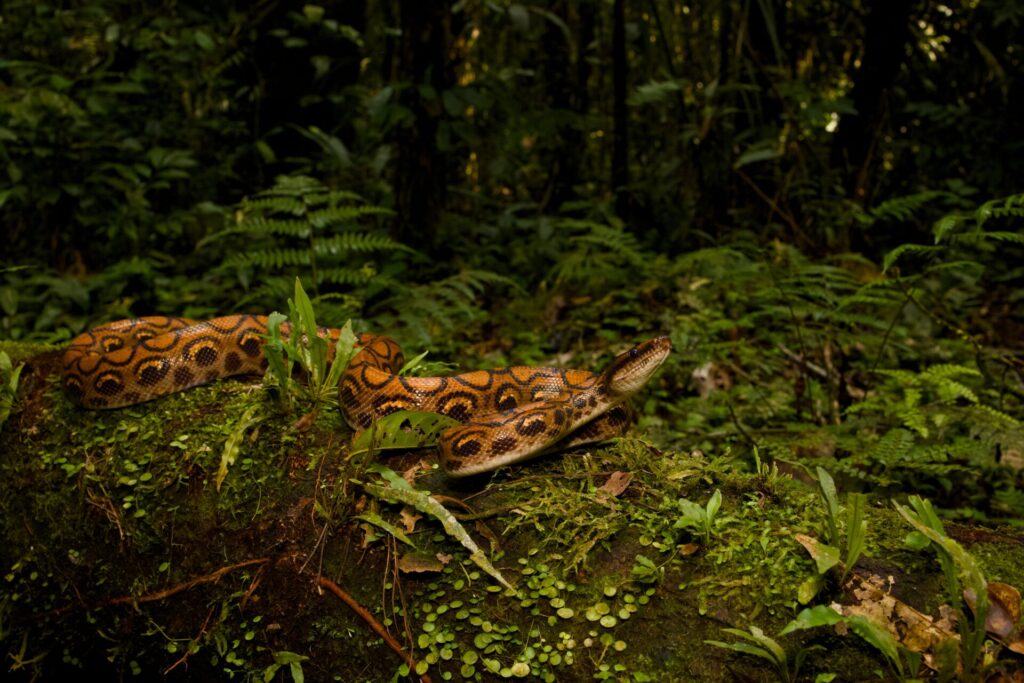
■ How to Find Them: Field Tips for Spotting Boas
Interestingly, rainbow boas are often active during the day.
Their vibrant pattern blends in remarkably well with the leaf litter scattered across the forest floor, making them difficult to spot at first glance.
Often, I detect them by sound rather than sight—when disturbed, they may let out a sharp hiss, alerting you to their presence.
I’ve frequently found them near water sources or “clay licks,” where animals gather to lick mineral-rich soil—both great spots to search if you’re hoping to find one.
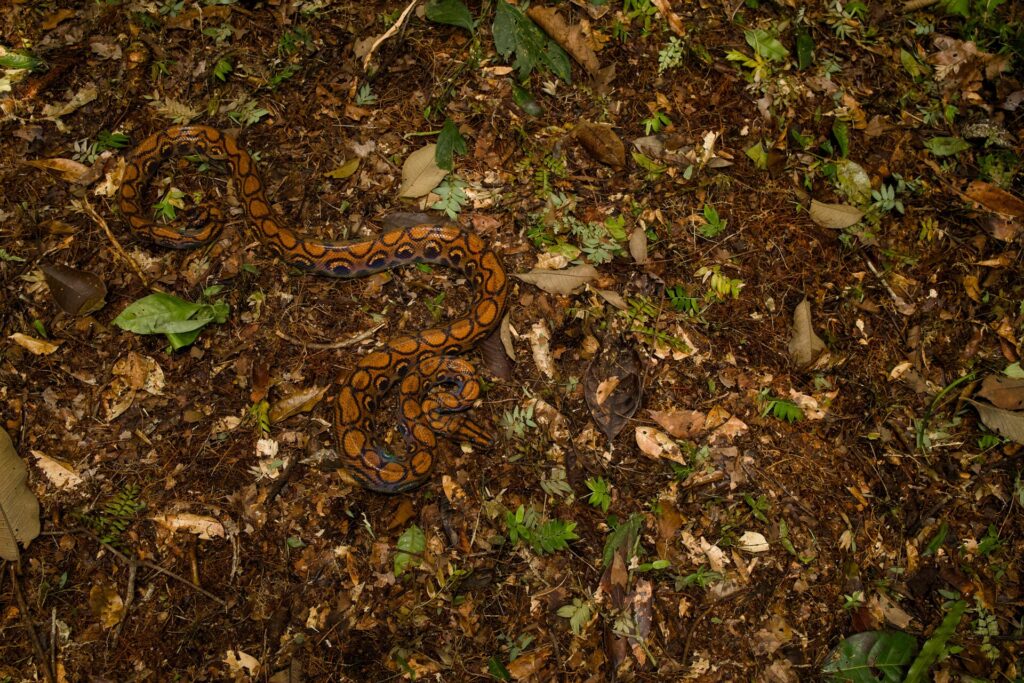
■ Final Thoughts: The Amazon’s Living Gem
Aside from the legendary anaconda, the rainbow boa is easily one of the most beautiful snakes I’ve encountered in the Amazon.
To see one in the wild is an unforgettable experience.
If you ever have the chance to visit the Amazon, I highly recommend searching for this incredible snake. The moment you lay eyes on its shimmering scales, you’ll understand why it’s called a rainbow boa.
